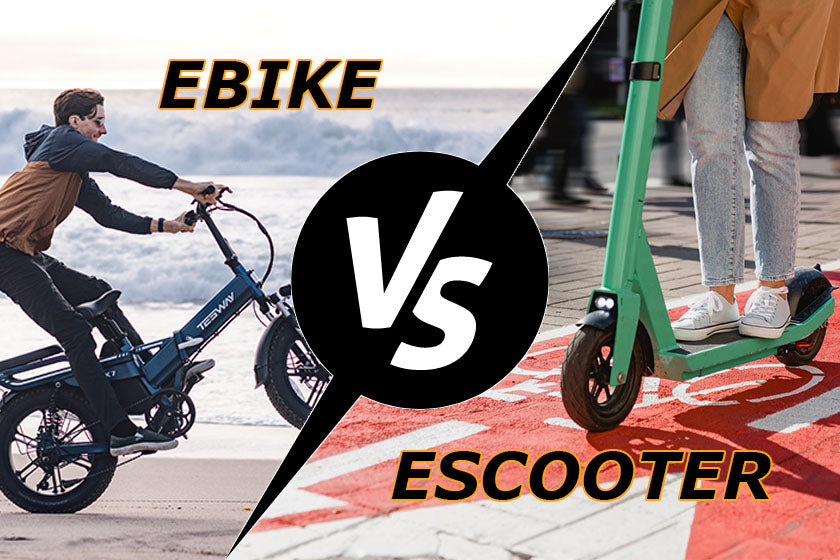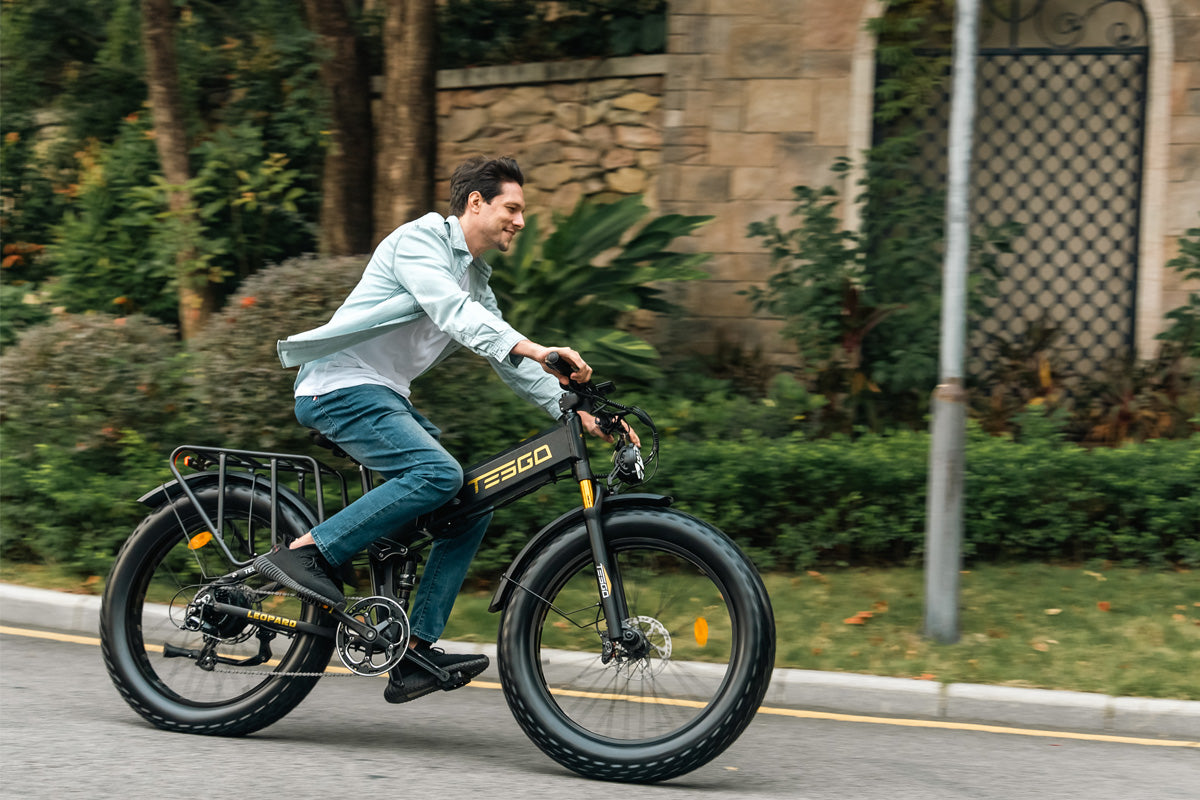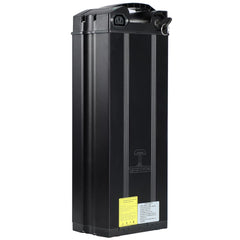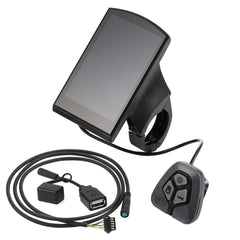
Unleashing the Mobility Potential of E-Bikes.
A remarkable transformation in the transportation industry, promising alternative to traditional commuting. These e-bikes provide a compelling answer to today's mobility needs by fusing the traditional bicycle with electric propulsion. Since they were first developed as prototypes and experimental designs, e-bikes have substantially changed.
E-bikes have acquired great acceptance and recognition across the globe thanks to developments in technology and societal attitudes toward sustainable mobility. With the help of an electric motor, rechargeable battery, controller, and sensors, these technological marvels increase riders' pedaling force so they can ride up hills, keep up greater speeds, and travel farther. E-bikes have several advantages, such as reduced carbon emissions, improved air quality, increased physical activity, cost efficiency, flexibility, and inclusivity.
They also fill the gap between various degrees of fitness, allowing individuals to preserve their freedom and mobility. For the best riding experience, it's important to understand how e-bikes operate. Deciding on the best e-bike depends on a variety of criteria, including legal requirements, battery capacity, frame types, motor power, and more. With improvements in battery technology, smart device integration, and partnerships with municipal planners changing the sector, the future of e-bikes is extremely promising. Join us on this thrilling journey as we explore the full potential of e-bikes and discover how they may improve our daily commutes and transportation.
An Overview of the History and the Development of E-Bikes
Significant technological developments have characterized the progress of e-bike technology, opening the door for a ground-breaking mode of mobility.
Early electric bicycle designs opened the way for a more useful and dependable means of transportation, using lithium-ion batteries that are lighter and more effective and tiny electric motors.
The potential of e-bikes as a green method of transportation has been acknowledged by governments and transportation agencies, leading to legislation specifying classes, speed restrictions, and safety criteria.
E-bikes are a commonplace phenomenon nowadays, and a variety of models are offered to meet different demands and tastes.
By providing seamless navigation, performance monitoring, and interaction with other smart devices, integration with smart technology and connectivity features would probably improve the riding experience. E-bikes have a bright future ahead of them, transforming transportation and reshaping urban environments.
Understanding Electric Bike Technology: How Do E-Bikes Operate?
E-bikes offer a thrilling riding experience by fusing classic bicycles with cutting-edge electric technology. Modern e-bikes may have all-in-one systems. The motor, which provides power assistance, is built into the wheel hub or crankset. The motor is powered by rechargeable batteries, while sensors and controls keep an eye on things like pedal cadence, speed, and torque. E-bikes frequently use throttle-based and pedal-assist systems with varying degrees of assistance. Real-time information and regenerative braking are further features of e-bikes.
E-bikes, on the other hand, are governed by legal classifications and rules, assuring compliance and a secure riding environment. The convenience and enjoyment of riding an e-bike are increased by advancements in battery life, motor performance, and integration with smart technologies like GPS navigation and smartphone apps. The way we travel is changing thanks to e-bikes, which are also influencing the direction of sustainable transportation.
Advantages of E-Bikes Beyond Commuting
E-bikes are an intriguing fusion of conventional bicycles and cutting-edge electric technology that provides benefits for the environment, better health, and cost savings for contemporary transportation demands. Before deciding to allocate $25 million to the city to permit the establishment of outdoor e-mobility battery charging and storage stations at 53 municipal Housing Authority developments, according to Retailer and Industry News (BRAIN) (2023), the U.S. Department of Transportation must have considered the advantages of e-bikes. Let's get more into the main advantages:
- Environmental Benefits: Major advantages of e-bikes include much lower carbon emissions and air pollution, which transforms them into a sustainable mode of transportation, displacing traditional cars, and resulting in cleaner air.
- Advantages for Health and Fitness: E-bikes offer a special blend of power support and convenience, encouraging physical activity and enhancing general fitness. Frequent commuting improves mental health, develops muscles, and increases cardiovascular fitness without feeling like extra work.
- Cost Savings: Compared to traditional cars, e-bikes offer considerable long-term cost savings that translate into lower maintenance costs and longer vehicle lifespans, making them an affordable solution for daily commuting.
- Flexibility and Convenience: E-bikes make urban commuting flexible and convenient by avoiding traffic and reducing journey times. To avoid hassles during rush hour, they have access to bike lanes, cycling tracks, and parking spots.
- Accessible Transportation: By removing physical obstacles and providing power assistance, e-bikes open up a larger range of mobility possibilities for people with physical disabilities or medical issues.
- Commuting Versatility: E-bikes provide versatility for shopping, visiting the area, and running errands, making them appropriate for a variety of daily activities while ensuring comfort and ease.
- Reduced Congestion: E-bikes are a sustainable and environmentally beneficial alternative to autos in metropolitan areas, decreasing traffic congestion and taking up less space on the road. Many advantages come with these vehicles, such as lower environmental impact, improved health and fitness, and lessened congestion. Urban communities can adopt e-bikes to live a greener, more active lifestyle that supports a healthier future.
Overcoming Challenges: Addressing Illusions and Concerns
To increase comprehension and acceptance of this cutting-edge means of transportation, misconceptions regarding e-bikes must be dispelled.
- E-bike regulations and safety considerations: E-bike safety is a concern, particularly given their speed and ability to share the road with other vehicles. It's important to remember that legislation, including classifications and speed limits, applies to e-bikes in many locations. By adhering to these guidelines and embracing safe riding behaviors, such as using helmets, obeying traffic regulations, and using designated cycling infrastructure, e-bike riders can boost their own and other people's safety.
- Range anxiety and battery life management: The dread of running out of battery life is another common concern. Yet, advancements in e-bike technology have significantly boosted the power and capacity of batteries. Cyclists who carefully manage their batteries can take pleasure in longer rides and plan their journeys accordingly. The fact that many e-bikes have pedal assist, which enables users to continue pedaling even when the battery is dead, should also be noted. No matter how long the battery lasts, this feature ensures a dependable source of mobility.
- Infrastructure for Charging and Usability: Concerns concerning the accessibility of charging stations and the practicality of charging e-bike batteries are regularly raised. An electric bike or battery may be recharged using any regular electrical outlet, making it convenient to do so at home, at work, or in public charging stations. Depending on the battery capacity, the charging process could take anything from a few hours to several days. As the use of e-bikes increases, communities are setting up more specialized e-bike charging stations to accommodate customers' evolving needs.
- Connection with Present Transportation Systems: In some areas, e-bike integration with current transportation networks can be difficult. Notwithstanding, many cities are actively investing in the infrastructure required for cycling, such as bike lanes, bike-sharing programs, and cycling-friendly public transportation options. By advocating for and supporting greater cycling infrastructure, riders can help remove these barriers and boost the use of e-bikes. A more efficient and interconnected transportation network will result from this.
- Cultural Acceptance and Perceptions: There may be regional and community-specific misconceptions about e-bikes. They nevertheless offer accessible transportation options, promote physical activity, and have positive health effects. By putting myths to rest and emphasizing advantages, one can win over more people and gain their acceptance. Initiatives focusing on e-bike safety, battery management, the construction of charging infrastructure, and cultural acceptance can help to establish an environment that is conducive to e-bike adoption. By overcoming these challenges, e-bikes can revolutionize urban transportation, reduce traffic, and promote sustainable transportation.
The Impact of E-bikes on Urban Mobility and City Planning
Urban mobility is transformed by e-bikes, which also have an impact on city planning and activities to define the future of urban transportation.
-
First and Last Mile Solutions: The gap between transit hubs, such as train stations or bus stops, and final destinations is bridged by e-bikes. They let commuters cover short distances swiftly and effectively, reducing the need for cars for these short trips. By introducing e-bikes into their transportation networks, cities may improve accessibility and reduce traffic congestion in urban areas while promoting multi-modal commuting and seamless connections.
-
Traffic Congestion Reduction: In metropolitan locations, e-bikes may help to lessen traffic congestion. As more people opt for e-bikes for their daily commutes rather than cars, there are fewer automobiles on the road. E-bikes allow riders to maneuver through crowded areas more easily and are more space-efficient. They also require less parking infrastructure. By promoting the usage of e-bikes, cities may improve traffic flow, reduce travel times, and increase the overall efficiency of their transportation systems.
- Bike-Friendly Infrastructure: The popularity of e-bikes is driving the demand for bike-friendly infrastructure in urban areas. To accommodate the growing number of e-bike riders, cities are investing in dedicated bike lanes, cycle tracks, and updated cycling infrastructure. These initiatives promote cycling, boost safety, and enhance the e-bike user experience. Cities are now putting e-bike charging stations in parking lots and other spaces to accommodate users' charging needs.
-
E-Bike Sharing Programs: Due to their usefulness and environmental friendliness as an alternative to traditional transportation methods, e-bike-sharing programs are gaining popularity in urban areas. These projects increase last-mile connectivity and reduce dependency on private automobile ownership by allowing users to hire e-bikes for short periods. By implementing well-thought-out e-bike rental programs, cities may provide locals and visitors with easily accessible and ecologically advantageous mobility options.
-
Supporting Sustainable Transportation: Plans for sustainable mobility include e-bikes significantly. By promoting the use of e-bikes, cities may reduce carbon emissions, improve air quality, and make progress toward their sustainability goals. Since they generate fewer greenhouse gases and less noise than cars and motorcycles, e-bikes are a more environmentally responsible choice. E-bike integration into urban transportation plans typically results in more livable, ecologically conscious cities.
- Partnerships with City Planners: City planners are integrating e-bikes into long-term city planning initiatives while collaborating with transit agencies and advocacy groups. This collaboration includes e-bike infrastructure, the development of bicycle networks, and the consideration of e-bike parking and charging facilities. Communities may create livable, interconnected, and sustainable urban landscapes that increase accessibility, lessen traffic, and enhance air quality by embracing e-bikes.
Choosing the Right E-Bike: Factors to Consider
- Assessing whether you need a vehicle for commuting, off-roading, or leisurely rides
- Legal guidelines and e-bike instruction
- Understanding the appropriate battery size and range for the intended use
- Frame kinds, motor power, and additional factors to take into account
- Consult with experts to make informed decisions.
- More details on THE BEST EBIKE TO BUY are here.

Maintenance and Care for E-Bikes
- Basic maintenance procedures include cleaning, lubrication, and tire pressure checks.
- Best practices for battery charging and maintenance
- Regular maintenance and examinations.
- locating approved repair services and post-purchase support.
- Read more on MAINTENANCE & AFTER-SALES SERVICE in this article...
E-Bikes' Potential for Modern Transportation in the Future
Through ongoing innovation, e-bikes are reshaping the future by improving performance, functionality, and the riding experience.
-
Enhancements in Battery Technology: One of the most crucial areas for e-bike development is battery technology. As battery technology develops, we might expect improvements in energy density, battery life, and charging efficiency. Longer rides without compromising performance may be made possible by lighter, smaller, and higher-capacity batteries found in the next e-bikes. Advances in fast-charging technologies will help reduce charging times, making e-bikes even more handy for everyday usage.
-
Integration with Smart Devices and Connectivity: The incorporation of e-bikes with smart devices and connectivity is a fascinating trend. Certain e-bike models may come with the capability to connect an e-bike to a smartphone, a GPS, or other smart devices. This connectivity can enhance the riding experience by providing real-time trip information, assistance with navigation, and integration with fitness-tracking systems. Riders may stay connected, monitor performance, and change their e-bike settings for a personalized and efficient ride.
-
Components for e-bikes may now be made out of materials that are both lightweight and extremely effective thanks to advances in modern materials science. For instance, due to its exceptional strength-to-weight ratios and enhanced overall performance, carbon fiber is being employed more and more in the frames and components of e-bikes. Using lightweight materials allows for rapid handling, better efficiency, and a longer range while also guaranteeing durability and comfort during the ride.
-
Increased Performance and Motor Efficiency: E-bike motors are also always getting better. We might expect stronger, more efficient motors that provide continuous power support with minimal vibration and noise. Longer trips on a single charge will be possible as motor technology continues to improve in terms of energy efficiency. Moreover, enhanced motor control algorithms will result in smoother power delivery, enhancing the overall riding experience.
-
Integration of Urban Mobility: As cities grow and give more importance to sustainable transportation options, e-bikes are poised to play a significant part in urban mobility. We might anticipate seeing a deeper integration of e-bikes with the current transportation infrastructure as a result of the expansion of bike-sharing programs, the installation of e-bike charging stations at significant transit hubs, and the development of infrastructure specifically for e-bikes.
-
Market Diversity and Growth Continue: It is expected that the e-bike market will continue to grow and diversify. As e-bikes become more popular and widely used, we might anticipate a diversification of model offerings to cater to a range of riding preferences. This includes the development of specialized e-bikes for off-road excursions, cargo bikes for moving stuff, and stylish, performance-focused e-bikes. Due to the market's expansion, riders will have more options and features that cater to their particular needs and preferences.
- Sustainability and the Circular Economy: In the future of e-bikes, sustainability will be a major priority. Manufacturers and designers are experimenting with environmentally friendly materials, using recycled parts, and using sustainable manufacturing techniques. The idea of a circular economy, in which e-bikes are made to last a long time and be recyclable, will gain popularity. Our strategy guarantees that e-bikes have a negligible negative environmental impact over their entire life cycle, from manufacturing to disposal.
The future holds a wealth of opportunities for e-bikes. E-bikes are expected to become even more useful, effective, and pleasurable as a result of current breakthroughs and new trends. With improvements in battery technology, connectivity, lightweight materials, and urban integration, e-bikes are poised to play a larger role in sustainable transportation systems, fostering the development of healthier and more environmentally friendly communities. E-bikes have a promising future, and the road ahead is jam-packed with intriguing possibilities.
Conclusion
Urban mobility has changed dramatically with the rise of e-bikes, which provide a viable and sustainable answer to issues like decreased carbon emissions and improved air quality. These electric bicycles enable riders to negotiate traffic, avoid parking, and get around physical limits. They also provide health and fitness benefits, cost savings, and flexibility. To create an e-bike culture that is safe and welcoming, it is essential to address misunderstandings and worries.
E-bikes can play a significant role in sustainable transportation options by solving range anxiety, enhancing charging infrastructure, and integrating with already-existing transportation networks.
Riders will have a wide range of solutions catered to their requirements and preferences as the e-bike market grows and diversifies. The development of e-bikes symbolizes a cultural turn toward eco-friendly living and a new way of seeing our interaction with urban areas. By embracing e-bikes, we can make daily journeys more fun, lessen our carbon footprint, and help create cities that are cleaner, healthier, and more connected. By working together, we can realize electric bicycles' full potential and transform how we travel, explore, and survive in the modern world. Ready to purchase an e-bike in the United States? Click here for a discount. If you're staying in Canada, we have a warehouse there. For further details, visit Tesgo Canada.
We are here to assist you with all your post-sales needs.
Newletter
Promotions, new products and sales. Directly to your inbox.
Lastest Blog Post
















 US
US
 Canada
Canada



